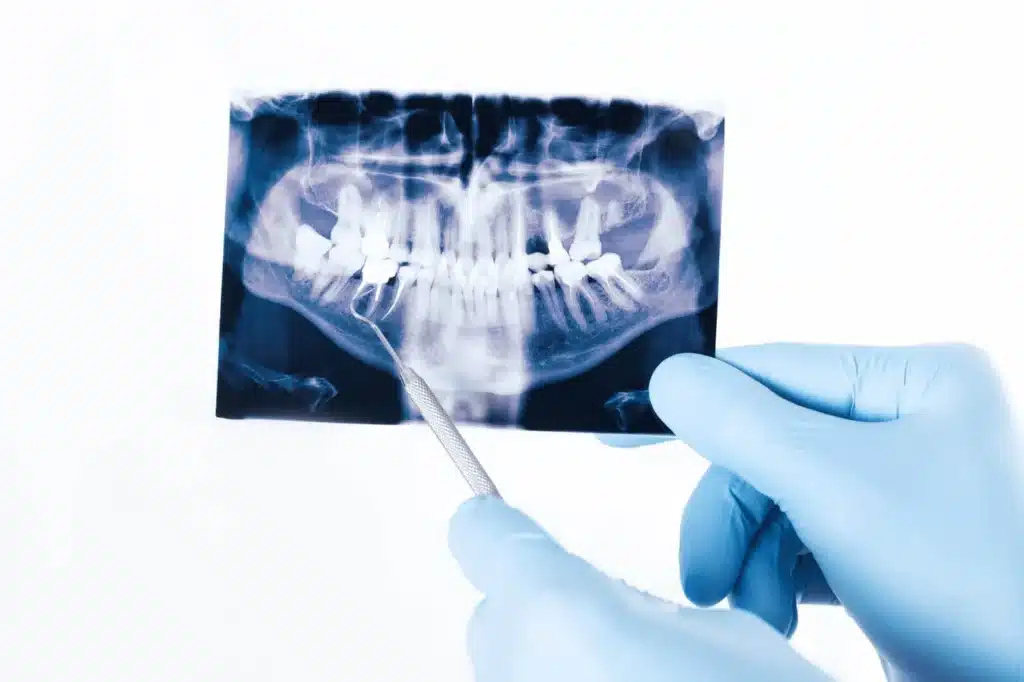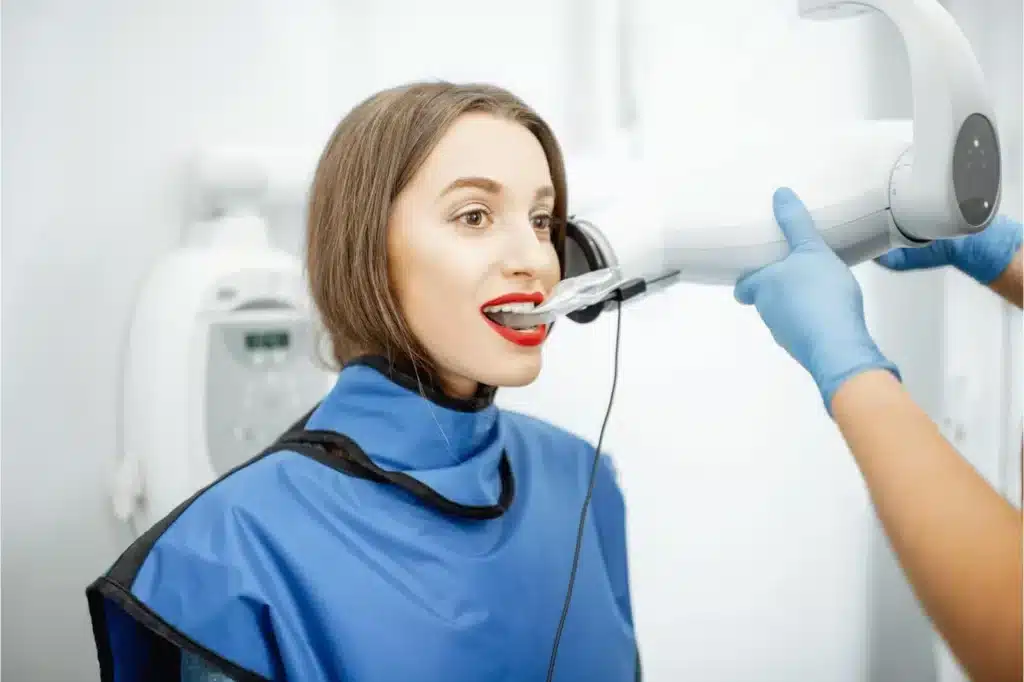Dental X-rays are now commonly used to detect oral health issues. Read more to know the types and use of dental x-rays.
Dental X-rays
Dental X-rays are special pictures of your teeth and jawbone that dentists use. They take these pictures to see things they can’t with just their eyes during regular checkups, like the insides of teeth and bones.
How do Dental X-rays work?
A type of invisible energy called radiation is used to make these pictures. The radiation goes through the soft parts of your mouth and makes pictures of your teeth and bones.
There are two types of oral X-rays:
- Traditional X-ray
- Digital X-rays
Traditional ones are taken on film, and newer digital ones use a computer. The digital kind is better because it uses much less radiation, which is good.

What can Oral X-rays find?
Oral X-rays help your dentist discover many oral health problems, such as:
- Holes in your teeth, especially in the tight spaces between them.
- Issues hiding under fillings in your teeth.
- Bone loss in your jaw.
- Places where there’s an infection.
- Find out where teeth are stuck, haven’t come out, or are blocked.
- When a tooth has an infection deep down in its root or between your gums and the tooth.
- Some lumps and bumps in your mouth could be harmful.
Dentists also use these X-rays to see if you need braces, dental implants, or fake teeth (dentures). And they check if you’re healing okay after specific treatments like fixing your jawbone or root canals.
How are X-rays done?
Before they take them, a technician will put a special apron on your chest and sometimes a collar around your neck. This apron and collar keep you safe from too much radiation.
When it’s time for the X-rays, you’ll sit in a chair or front of a machine. The technician will put a film or a sensor in your mouth and then push a button to take the X-ray picture. It’s essential to stay very still during this process.
Types of Dental X-rays:
There are two types of dental X-rays:
- Intraoral X-rays
- Extraoral X-rays
Intraoral X-rays
Intraoral X-rays have different types, like bitewing, periapical, and occlusal.
The different kinds of intraoral X-rays are:
Bitewing X-rays: Show the upper and lower teeth in one area. They help find cavities between teeth and near the gums.
Periapical X-rays: Show your whole tooth, from the top to the bottom. These X-rays help find cavities, gum issues, and bone problems.
Occlusal X-rays: Help find issues in the roof or floor of your mouth, like broken teeth, hidden teeth, or other problems.
Extraoral X-rays
These include panoramic, cephalometric, and cone beam CT scans.
The different kinds of extraoral X-rays are:
Panoramic X-rays: Show everything in your mouth in one picture, like your teeth, jaw, nerves, and more. It’s like an extensive overview.
Cephalometric X-rays: Show your whole head from the side. Dentists use them to see how your teeth and jaw fit together, especially if you need braces.
Cone beam CT scans: These are 3D X-rays that show your teeth, jaw, and other things inside your head. Surgeons use them for dental implants and checking for tumors or face fractures.
Are Dental X-rays Safe?
Oral X-rays are usually safe. The radiation you get from them is tiny, like what you get from using TVs, phones, or being around common things like floor tiles and sunshine.

Only very high doses of dental X-rays can harm you and might increase the chance of cancer. That’s why you should only get them when needed; your doctor can help you decide.
Conclusion
The blog guides you on dental X-rays and how it works. Dental X-rays are safe. These X-rays detect many oral issues that can be treated on time. Contact Dentalsway for more information on advancements in dental technology. We are happy to help you.


